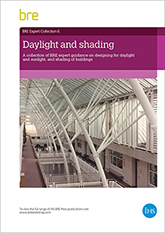Bre Digest 361 Do Buildings Crackers
Bre Digest 361 Do Buildings Crackers. For further information. In addition, we run and courses throughout the year, and in partnership with, offer an annual subscription to allow you to build a comprehensive library of BRE publications through the service. Examines the causes of cracking in buildings and shows, with descriptions and illustrations, the visible results of a wide range of problems. Why do buildings crack? (2014 revision) Digest 361. Document Status. Current Supplement. Core Supplement. Buildings and communities. BRE is owned by the BRE Trust, a registered.
This document is available as part of the Construction Information Service. The Construction Information Service brings together a comprehensive collection of essential technical documents from a wide range of publishers in one online package. Covering all aspects of building, engineering, design and construction, it provides its users with a single source for all their technical information needs. Contact us today to find out how to become a subscriber to this indispensable service. Why do buildings crack?
(2014 revision) Digest 361. Document Status Current Supplement Core Supplement Series Digest Abstract Examines the causes of cracking in buildings and shows, with descriptions and illustrations, the visible results of a wide range of problems. Does not contain a complete solution to every cracking problem, but aims to broaden the understanding of the factors responsible and increase the likelihood of correct diagnosis and repair.
Author Sadgrove, R. History Revised edition of the Digest 361 (1991). ISBN 884 Subjects • Special subject areas • Building failures Publisher History BRE is a building science centre that generates new knowledge through research. This is used to create products, tools and standards that drive positive change across the built environment. BRE helps its government and private sector clients meet the significant environmental, social and economic challenges they face in delivering homes, buildings and communities.
BRE is owned by the BRE Trust, a registered charity. The Trust uses the profits made by the BRE companies to fund research and education that advances knowledge of the built environment. Information NBS NBS has produced specification systems and information products for construction industry professionals for more than 40 years. The National Building Specification is the recognised UK national standard and is used by over 5,000 organisations. NBS is part of RIBA Enterprises Ltd.
IHS Markit IHS Markit is a leading global source of critical information and insight for customers in a broad range of industries. Our customer product and service solutions span four major areas of information: energy, product lifecycle management, environmental and security. By focusing on our customers first, we deliver data and expertise that enable innovative and successful decision-making. Customers range from governments and multinational companies to smaller companies and technical professionals in more than 180 countries.
IHS has been in business since 1959 and employs more than 3,500 people in 35 locations around the world.
Don’t waste your time on the app that may ask you first get our downloader etc. License key ultra mp3. We are just here to solve your problem about the licensing of this software. Get the DbVisualizer 9.5.6 Cracked install it on your Mac and Win operating system. So if you are thinking about its registration get the new DbVisualizer 9.5.6 keygen and serial number from here and put them in the code field. All videos for all the function of this DbVisualizer Crack for mac and windows display on the official site.
Assessing cracks in houses Everyone is familiar with cracks in the brick or concrete block walls of houses. The presence of some narrow cracks is usually tolerated and even expected if the house is old, but it is not always obvious what level of cracking is acceptable and when building repairs are necessary. Rupert Pool explains how such cracks can be assessed. Cracks in brick or concrete block walls can be caused by a number of factors. One of the most unnerving for the occupants is subsidence or foundation movement.

Changes in the ground conditions under and around a house can cause it to move slightly, which can lead to cracks to developing in the walls. Historically, claims on household insurance policies for repairs to buildings after subsidence have increased after periods of very dry weather. This prompted the industry to look in detail at how the cracks were assessed and what repair works were necessary. In order to help building surveyors to identify when ground movement had occurred and when structural intervention was necessary, BRE carried out an assessment of 130 properties that had suffered from subsidence.
The results of the study enabled a way of categorising cracks to be developed, which would help building surveyors and insurance assessors to determine whether the cracks were likely to affect the property – and what repairs were appropriate. The results of the study and the conclusions were published in BRE Digest 251 Assessment of damage in low-rise buildings. Six categories of crack were identified, which linked the width and number of cracks to the type of repair that was appropriate. Damage categories with descriptions of typical damage. Ease of repair in italics. 0 - Hairline cracks of less than about 0.1 mm which are classed as negligible. No action required.